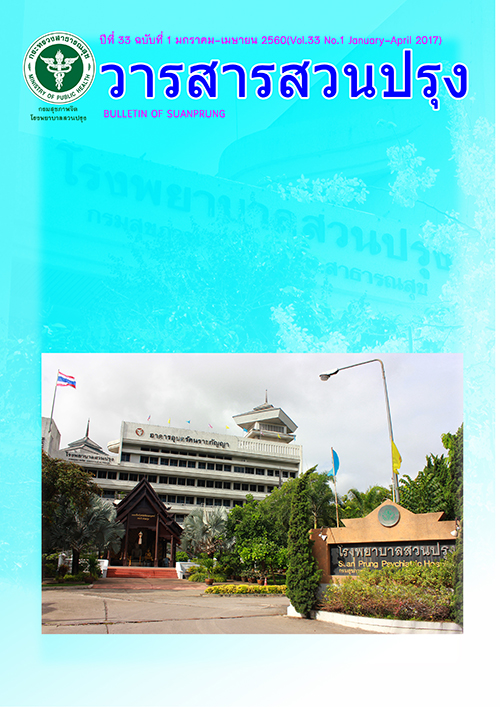โมเดลความสัมพันธ์เชิงสาเหตุความสุขในความรักตามหลักพุทธจิตวิทยา;Development of the Causal Model of Love Based Happiness According to Buddhist Psychology
Main Article Content
Abstract
วัตถุประสงค์ พัฒนาโมเดลความสัมพันธ์เชิงสาเหตุความสุขในความรักตามหลักพุทธจิตวิทยา
วิธีการวิจัย ผสมวิธี 2 ระยะ, ระยะที่ 1 สัมภาษณ์เชิงลึกกลุ่มตัวอย่างโดยเลือกแบบเจาะจง จำนวน 8 คนเพื่อพัฒนาโมเดลและแบบประเมินมาใช้ในระยะที่ 2 การวิจัยเชิงปริมาณ โดยสุ่มสองขั้นตอนได้กลุ่มตัวอย่างในกรุงเทพมหานคร จำนวน 410 คน เครื่องมือวิจัยคือ แบบสัมภาษณ์เชิงลึก และแบบสอบถาม การวิเคราะห์ข้อมูลเชิงคุณภาพใช้การวิเคราะห์เนื้อหาและการสร้างข้อสรุปแบบอุปนัย การวิเคราะห์ข้อมูลเชิงปริมาณใช้สถิติบรรยาย การวิเคราะห์สหสัมพันธ์ด้วยโปรแกรมสำเร็จรูป การวิเคราะห์เพื่อตรวจสอบความตรงของโมเดล และการวิเคราะห์ขนาดอิทธิพลทางตรงและทางอ้อมด้วยโปรแกรม LISREL
ผล ระยะที่ 1 โมเดลฯ ประกอบด้วยตัวแปรแฝงภายนอก 2 ตัว คือ หลักฆราวาสธรรมสี่ และบุคลิกภาพห้าองค์ประกอบ ตัวแปรแฝงภายใน 2 ตัว คือ เจตคติต่อความรัก และความสุขในความรัก ระยะที่ 2 พบว่า โมเดลมีความสอดคล้องกับข้อมูลเชิงประจักษ์ โดยมีค่าไค-สแควร์ = 89.94 องศาอิสระ = 71 ความน่าจะเป็น = .064 ค่าดัชนีวัดความกลมกลืน (GFI) = .97 และค่าดัชนีรากกำลังสองเฉลี่ยของค่าความแตกต่างโดยประมาณ (RMSEA) = .026 อธิบายความแปรปรวนของความสุขในความรักได้ร้อยละ 97 อิทธิพลทางตรงจากหลักฆราวาสธรรมสี่ และเจตคติต่อความรักส่งผลต่อความสุขในความรัก มีค่าอิทธิพล = .34 และ .89 ตามลำดับ อย่างมีนัยสำคัญทางสถิติที่ระดับ .01
สรุป สาเหตุความสุขในความรักตามหลักพุทธจิตวิทยาประกอบด้วยบุคลิกภาพห้าองค์ประกอบ, เจตคติต่อควา
The objective of this study was to develop the casual relation model of love based happiness according to Buddhist psychology.
The methodology used in this study was a two-phase mixed methods approach: the initial phase of the in-depth interview with a purposive sampling group consisted of 8 persons who developed the model and questionnaire for the following quantitative research phase which consisted of a two - stage random sampling group of 410 persons in Bangkok. The research tools included in-depth interview and questionnaire. The qualitative analysis used content analysis and provided an inductive conclusion. The quantitative analysis used descriptive statistics. The correlation analysis was carried out by a computer program called LISREL, which examined the model validity as well as the direct and indirect effects.
The results of the initial phase revealed that the casual relation model of love based happiness according to Buddhist psychology consisted of 2 exogenous latent variables: the couple relationship based on Gharavasa – Dhamma and the Five – Factors Personality. Moreover, there were 2 endogenous latent variables: the attitude of love, and love based happiness. The following phase revealed that the model was consistent with the empirical data with a chi – square of 89.94, the degree of freedom (df) of 71, the probability of 0.64, the goodness – of – fit index (GFI) of .970, and the root mean square error of approximation (RMSEA) of .026. This implied a variance of love based happiness of 97.00. The direct effect from a couple relationship based on Gharavasa – Dhamma and the attitude of love which causes the love based happiness had an effect size of .340 and .890 respectively. The statistical significance was scored at level .01.
In conclusion, the cause for love based happiness in Buddhist psychology consisted of the Five – Factors Personality, the attitude of love and Gharavasa – Dhamma.
มรัก และหลักฆราวาสธรรมสี่
Article Details
บทความหลังผ่านการปรับแก้จากกองบรรณาธิการแล้ว เป็นลิขสิทธ์ของวารสารจิตเวชวิทยาสาร โรงพยาบาลสวนปรุง กรมสุขภาพจิต กระทรวงสาธารณสุข ห้ามเผยแพร่เพื่อประโยชน์ทางการค้าโดยไม่ได้รับอนุญาต แต่อนุญาตให้เผยแพร่บทความดังกล่าวเพื่อประโยชน์ทางการศึกษาแก่ประชาชนทั่วไป ทั้งนี้กองบรรณาธิการไม่จำเป็นต้องเห็นด้วยกับบทความหรือข้อคิดเห็นใดๆ ที่ปรากฏในวารสารสวนปรุง
